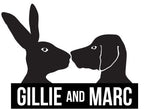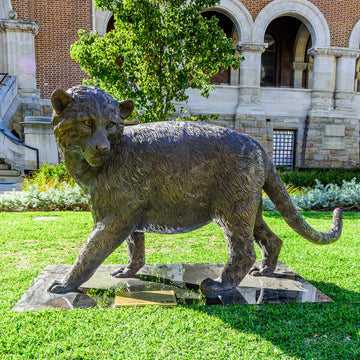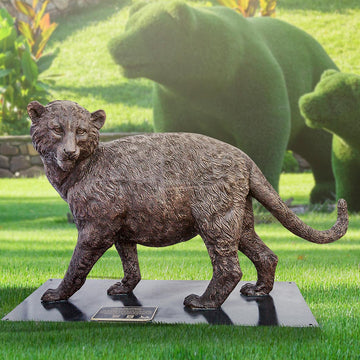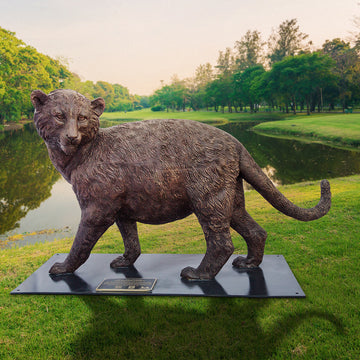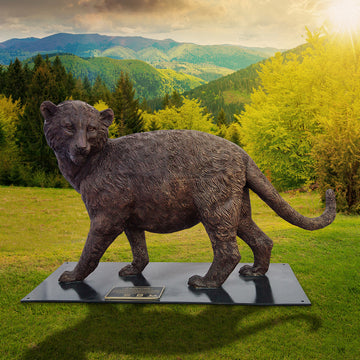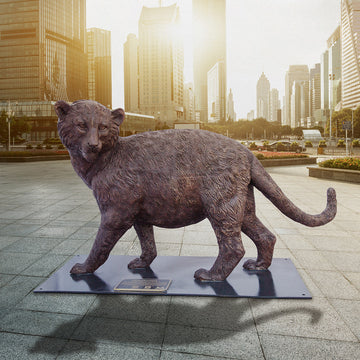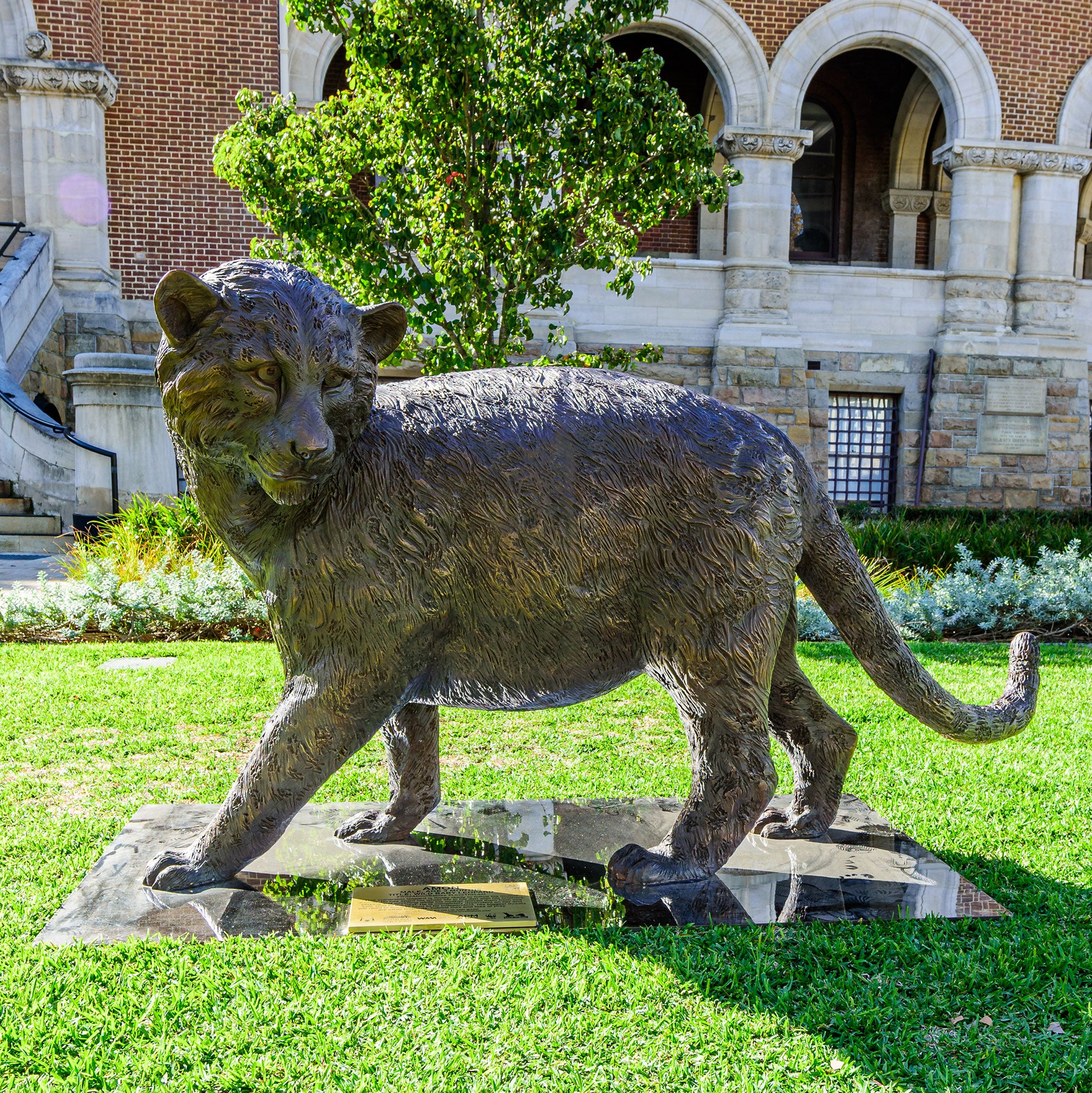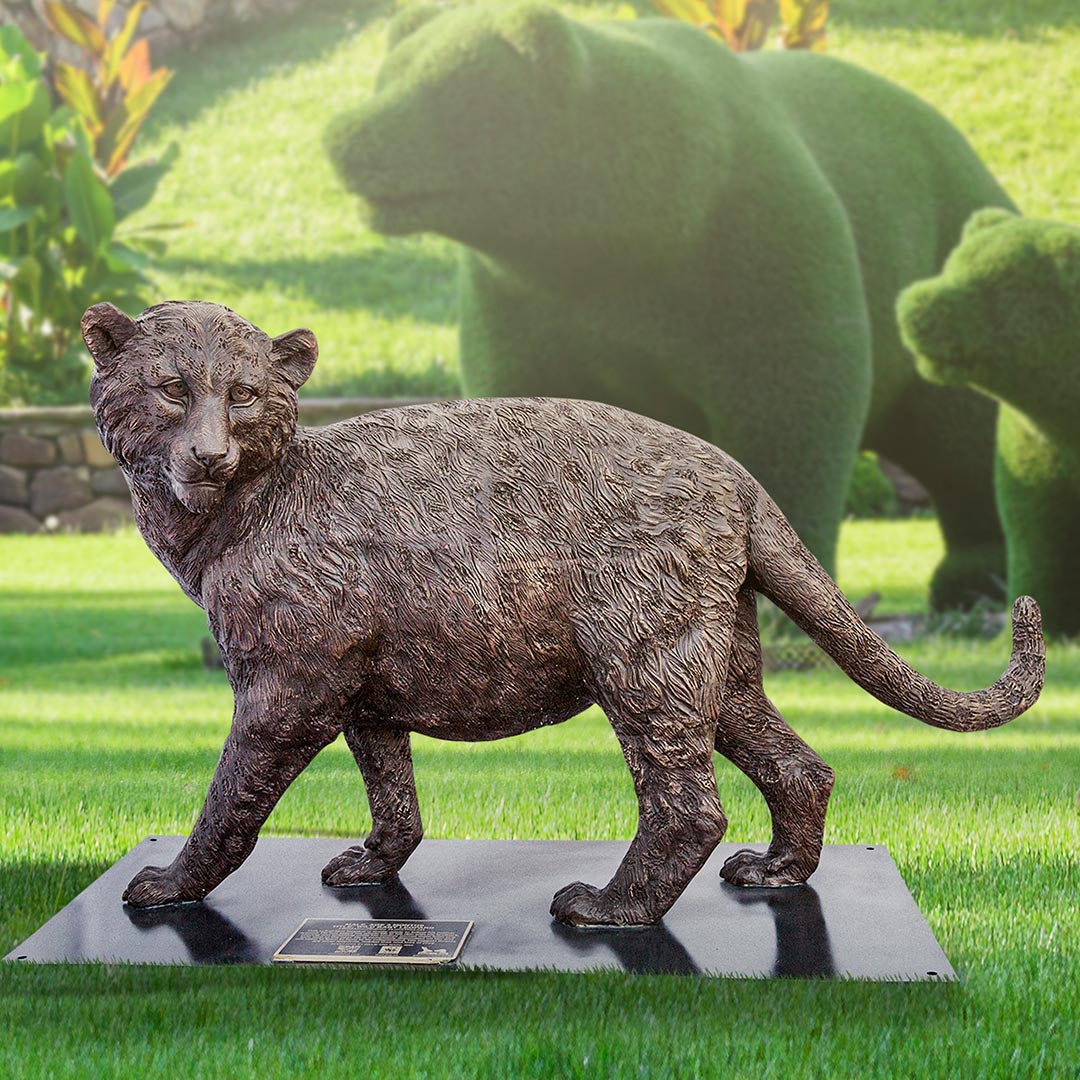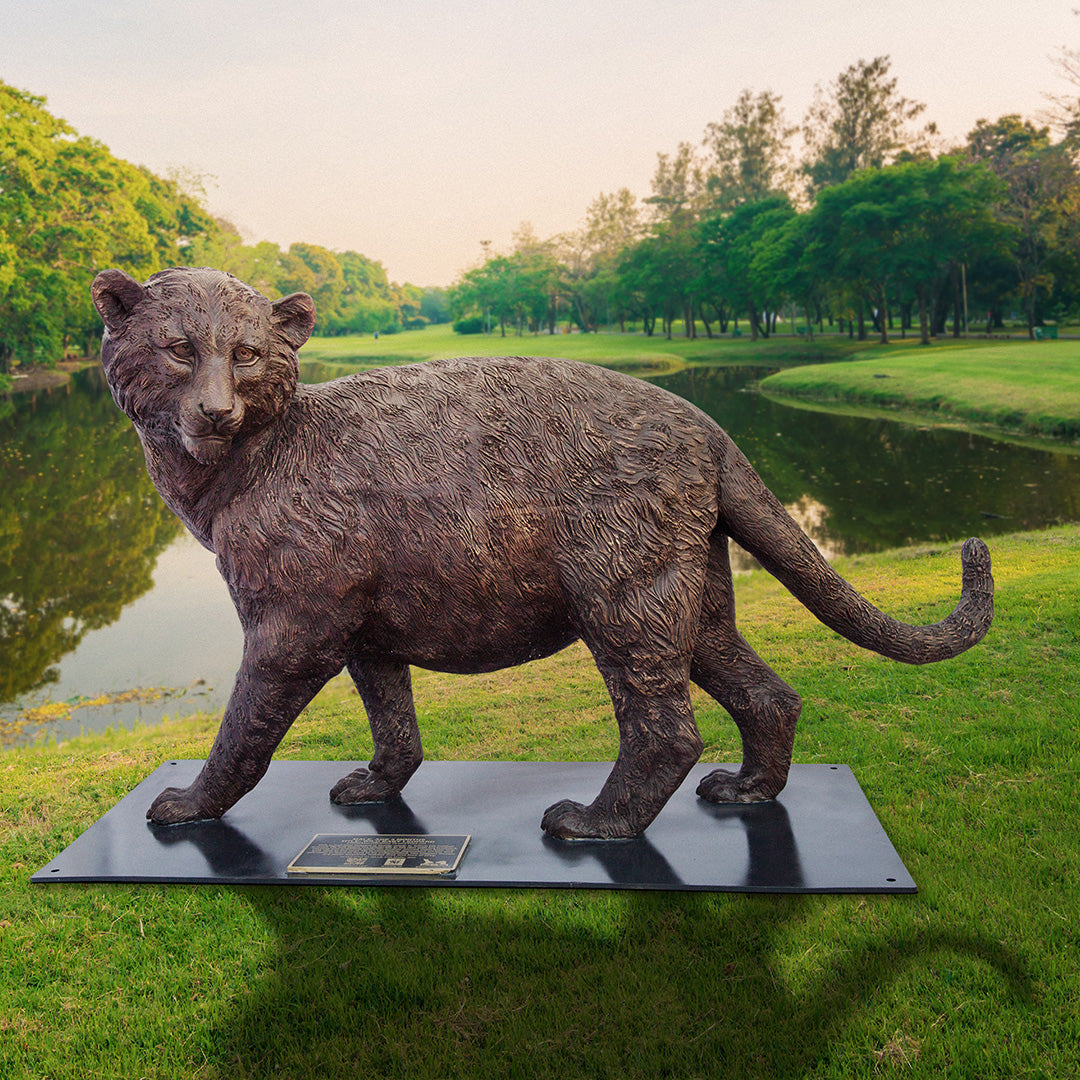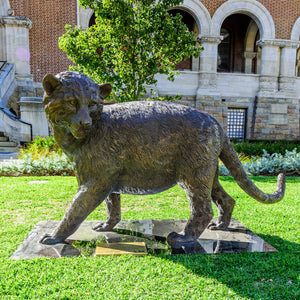Dimensions
Sculpture:
44.9 x 74.8 x 33.5 inch (H*L*W) 440.9 lbs
114 x 190 x 85 cm (H*L*W) 200 kgs
Base:
62.6 x 33.5 inch (L*W)
159 x 85 cm (L*W)
Medium
Bronze
Style
Contemporary Sculpture, Wildlife, Activist Art
Edition Number
/6
Description
At 3 months old this little boy is finally old enough to follow his mother out on a hunt. Picking their way through the jungles of India, they search for something to at. He stays as quiet as a can, fighting the urge to playfully launch himself at his mothers swinging tail. But after hours of searching the have found nothing. They see a farm up ahead with plenty of animals, but the leopard cub can feel his mothers unease. It’s dangerous taking from the humans but this time, it seems they have no choice.
The smallest of the large cats may be one of the most adaptable, the leopard can live in almost any type of habitat, from deserts to swamps. They are solitary creatures who spend their days sleeping and their night's hunting, using their spotted “rosette” coat as camouflage, blending in with the leaves of trees.
They spend a decent amount of their time in trees being very capable climbers. They will even drag their prey, which can sometimes way more than they do, up to protect it from other scavenging animals. They are quite happy to eat whatever comes their way, from a gazelle to a cheetah cub, or even a snake.
Leopards usually give birth to at least two cubs who are small and grey with barely visible spots. They are completely helpless and the mother needs to move them to different safe locations until they can start playing and learning to hunt. It is a very dangerous time for a leopard as cubs have a mortality rate of 41-50% in their first year. They are threatened by different predators but their biggest threat is other leopards. At about 3 months old the cubs can follow their mother on hunts at one year old can hunt for themselves. They will stay with her for about 2 years.
The biggest threat to leopards is habitat loss and fragmentation with their forested homes being turned into agricultural land. In Africa alone, it has been estimated that 66% of their range is gone due to human expansion. This in turn reduces their natural prey, forcing them to look to livestock which has deep repercussions when the farmers retaliate. They are also a target for trophy hunters and poachers. Their coats are a coveted item on the illegal wildlife trade as are its bones.
Artwork Features
Gillie and Marc love working in bronze for many reasons. Bronze is a very hardy material and will last forever. As experts in coloring bronze, Gillie and Marc enjoy experimenting with their sculptures, adding a splash of color to brighten the work, making it even more unique. > Read more
For every purchase of a bronze sculpture you will receive a certificate of authenticity, titled, signed, dated and editioned by the artists.
Care Instructions
Bronze is very easy to clean, allowing you to enjoy your precious sculpture with minimal upkeep. > Read more
Shipping, Returns and Refunds
Please visit this page to learn all about our policies. > Read more
Give Back to WWF-AUSTRALIA
With every edition purchased, Gillie and Marc will proudly donate 30% of proceeds to support WWF-Australia.
WWF is one of the world’s largest and most respected independent conservation organisations. WWF’s mission is to stop the degradation of the earth’s natural environment and to build a future in which humans live in harmony with nature.
For more information, visit https://wwf.org.au/donate/wild-about-babies/
